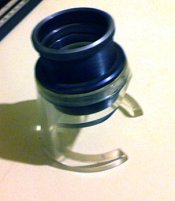Jim Benson
Member
- Joined
- Jun 14, 2014
- Messages
- 18
- Format
- 4x5 Format
Retouching B & W RC prints, and Blotter book drying of FB prints
Im back in the darkroom after a hiatus, and working off a large stock of RC paper.
Im having a problem with spotting, which I had not noticed in my previous experience.
Ive never done spot removal before, but it seems to be a necessity, and Im exploring different methods.
Has anyone used the SpotPen retouching set?
It seems like a viable candidate because 1) it states that it works well with RC paper, and 2) there is a dye remover pen available to correct mistakes.
My only concern is that there are one or two comments in the reviews to the effect that darker colors are harder to match, and take several a[applications. Since my current photographs have black backgrounds, and this is where the dust spots seem most likely to show up, this could be a problem.
I am currently printing on Ilford multigrade paper.
Also, with both RC paper, and FB paper, what are peoples experiences with blotter books in terms of print drying? How long does that process usually take, and how often can the books be reused?
Is it a generally satisfactory process?
Im back in the darkroom after a hiatus, and working off a large stock of RC paper.
Im having a problem with spotting, which I had not noticed in my previous experience.
Ive never done spot removal before, but it seems to be a necessity, and Im exploring different methods.
Has anyone used the SpotPen retouching set?
It seems like a viable candidate because 1) it states that it works well with RC paper, and 2) there is a dye remover pen available to correct mistakes.
My only concern is that there are one or two comments in the reviews to the effect that darker colors are harder to match, and take several a[applications. Since my current photographs have black backgrounds, and this is where the dust spots seem most likely to show up, this could be a problem.
I am currently printing on Ilford multigrade paper.
Also, with both RC paper, and FB paper, what are peoples experiences with blotter books in terms of print drying? How long does that process usually take, and how often can the books be reused?
Is it a generally satisfactory process?











